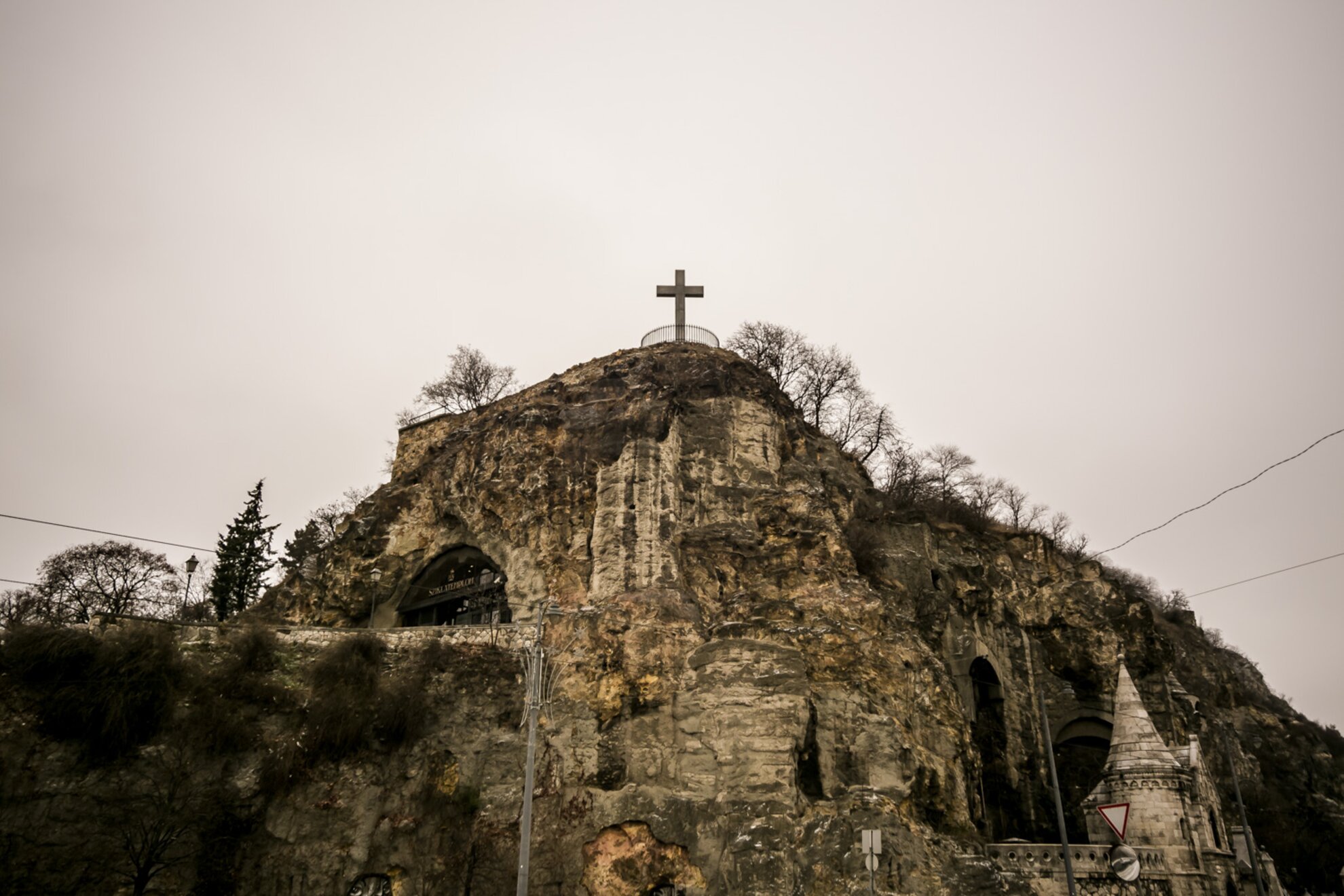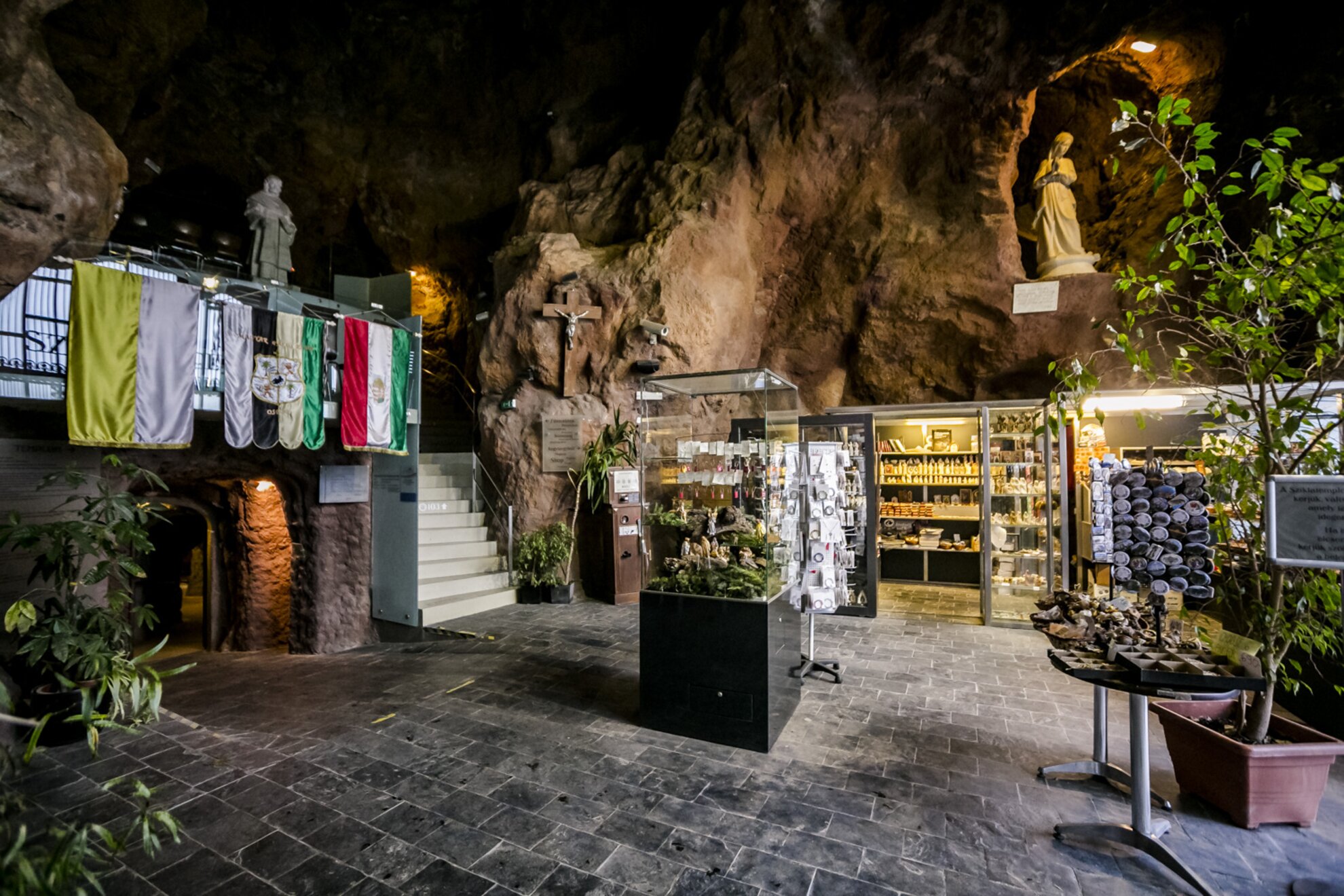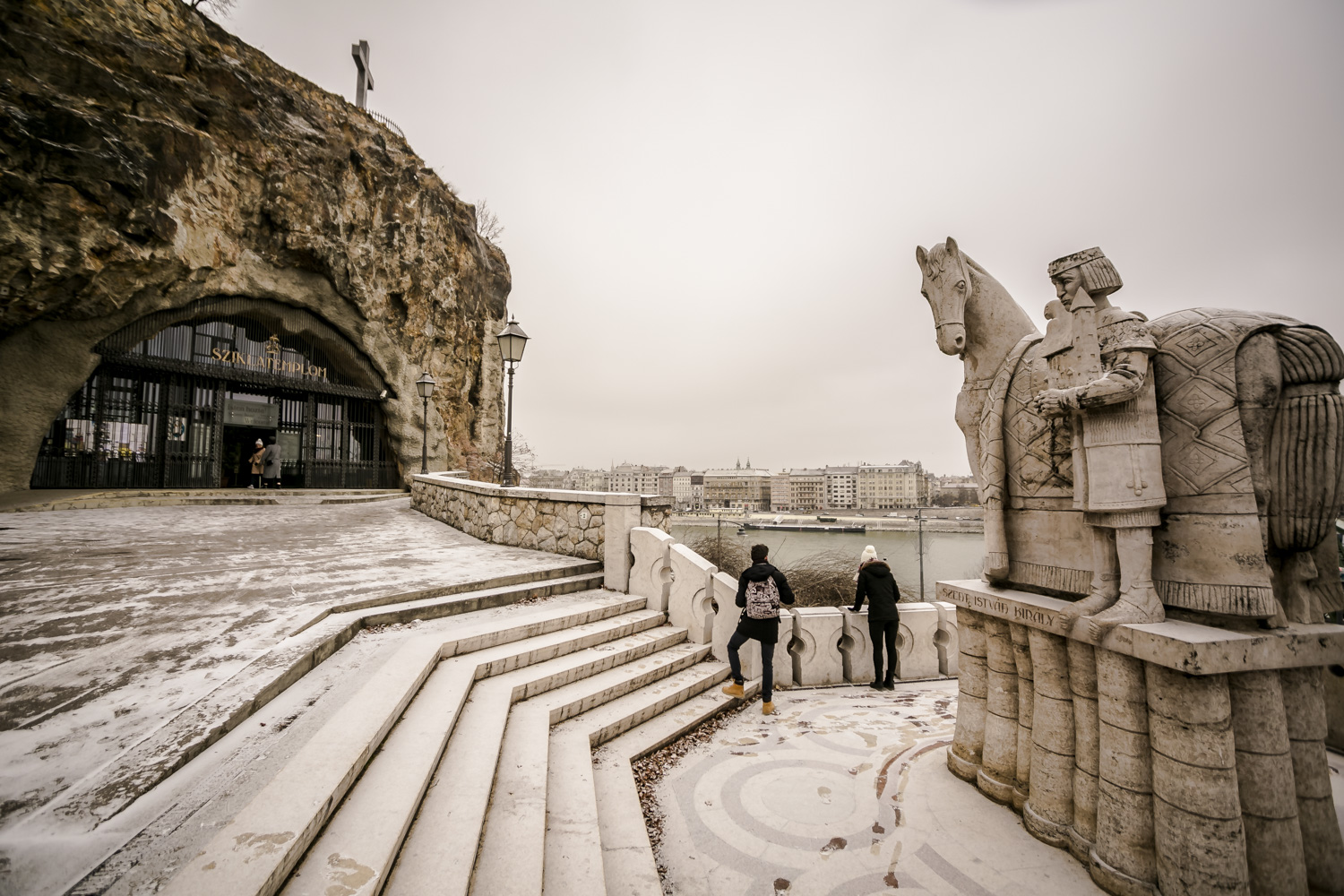Crossing the Liberty Bridge from the Pest side of the city, a stone-built neo-Romanesque cloister emerges from Buda’s undulating hillside, evenly blending into the rocky terrain in the background. Left of the cone-shaped turrets, a mystical cavern is hidden in plain sight with a iron-barred gate that grants entrance into the depths of the hill. This grotto houses Budapest’s Cave Church, which now operates as an ordinary chapel for a local religious community with regular masses scheduled here every day of the week, while providing a maze of attractions to visitors from all over the world.

The history of this holy chamber dates back to centuries ago, with glorious and gloomy eras surrounding its past. Legend has it that in the early Middle Ages, a hermit called Iván retreated to the then-abandoned grotto to provide healing to the sick by using the bubbling waters gushing up at the cave’s entrance. Inspiration for building a church here arose in the 1920s, when a group of Magyar pilgrims – after returning from a spiritual journey in Lourdes, France – committed to set up a shrine to Hungary’s patron saint, the Virgin Mary. In 1926 the place was consecrated with the main altar placed in the outer cave, while benches for the believers were set up outside on the rock terrace in front of the cave.

Soon after, following 150 years of exile, Hungary’s very own Pauline order was set to return to the Magyar homeland in 1934, so thousands volunteered by providing help to expand the rock chapel into a cavernous church suitable for the 16 monks coming back from Poland, where they served while the order’s operation was banned in Hungary. By carrying out controlled explosions, separated caverns were formed inside the cave, creating smaller areas ideal for setting up secluded chapels, while on the Danube side of the Gellért Hill a massive monastery was built to house the monks, who were welcomed by a cheering crowd.

During WWII, the Pauline Fathers who were now settled here gave shelter to civilians and refugees, often dressed as monks to protect them from detection. During the communist regime that followed the war, many of the country’s ecclesiastics were arrested and executed, and in 1960, a massive concrete wall was set up here to block the entrance to the church, after it was shamelessly looted by the Soviets.

After the Soviet-backed troops left Hungary, the wall surrounding the entrance was demolished, the rock church was restored, and it was again consecrated by the Pauline order – although a piece of the concrete wall that once blocked the church from the outside world is still visible on the right side of the entrance. Today the members of the Pauline order continue to perform religious functions here, while the establishment has also become a major tourist attraction – around 200,000 souls head up the hill every year to explore this concealed house of worship that is now among the three most frequented churches in Budapest, besides St. Stephen’s Basilica and Matthias Church.

Those who want to admire this hallowed formation can get to the Cave Church after an easy-to-conquer hike along an upward path of Gellért Hill, found across from the main entrance of Gellért Bath. Once atop, visitors are welcomed with a breathtaking panorama encompassing the Liberty Bridge, the Danube, and Pest’s skyline, while near the entrance an unusual sculpture depicts a young St. Stephen, Hungary’s founding king, standing beside his horse. Upon crossing the archway that leads into the church, we are surrounded by otherworldly settings, where natural light infiltrates through colorful stained-glass windows – this heavenly construction stands as a testament to nature, man, and the Supreme Being joining forces to create a space of timeless peace. Relics found in the outer cave include sculptures portraying Our Lady of Lourdes, the canon of Esztergom and founder of the Pauline Order Blessed Eusebius (who also lived as a hermit), and Cardinal József Mindszenty, who visited the church on several occasions before being subjected to severe torture during the communist regime in Hungary.
As we proceed deeper inside the hill through a tunnel-like corridor, we feel a pleasantly warm climate that is especially welcome in the depths of winter. We learn that the 20° Celsius temperature is consistent all year round thanks to the heat emitted by the thermal waters circulating under the hill. At the end of the passage, a mystical world with a series of interconnecting chapels unfolds before our eyes, with several religious relics placed across these semi-secluded subterranean chambers. Artifacts found here include a sculpture of Our Lady wearing the Holy Crown of Hungary (during his reign, St. Stephen asked the Virgin Mary to be a patron of Hungary) with Baby Jesus standing by her side, and a depiction of the Pauline Order’s eponymous character Hermit St. Paul with a raven perched on his shoulder and a lion at his feet; a relic believed to be a piece of the saint’s tibia is also kept here.

At the back side of the church, a few steps lead up to a small sanctuary with an oversized bronze-made representation of an eagle mounted on the rock wall, symbolizing Poland’s heraldic animal. This secluded shrine is reminiscent of the time when the Cave Church served as shelter for Polish refugees during WWII, and the Polish bronze altar found here is one of the shrine’s most precious relics.

Inside the nave of the church, a large wooden crucifix is placed above a green pyrogranite altar, an ornate work of Hungary’s renowned Zsolnay Porcelain Manufactory, while an icon of three overlapping fish is mounted on the front side of the altar, symbolizing the Holy Trinity. Concluding our journey into this ethereal environment, we finally enter a hall filled with ornate wooden carvings that portray numerous sacred scenes, encompassing Moses with The Ten Commandments and Blessed Eusebius.

From here we start ascending from under the ground, and we take a quick look around the indoor shop that proffers a variety of sacred merchandise, including statuettes of the Virgin Mary, hand-carved crucifixes, and even Christmas decorations, before leaving the Lord’s subterranean home. When we step out of the Cave Church to the frosty outdoors, it takes a few moments before we readjust to our everyday life, but the stunning scenery over the Danube and Pest’s urban landscape certainly helps us acclimatize.
Mass is held at the Cave Church daily at 8:30am, 5pm, and 8pm with an additional service at 11am on Sunday; a Midnight Mass is scheduled in the church on Christmas Eve. Masses are delivered in the Hungarian language.




